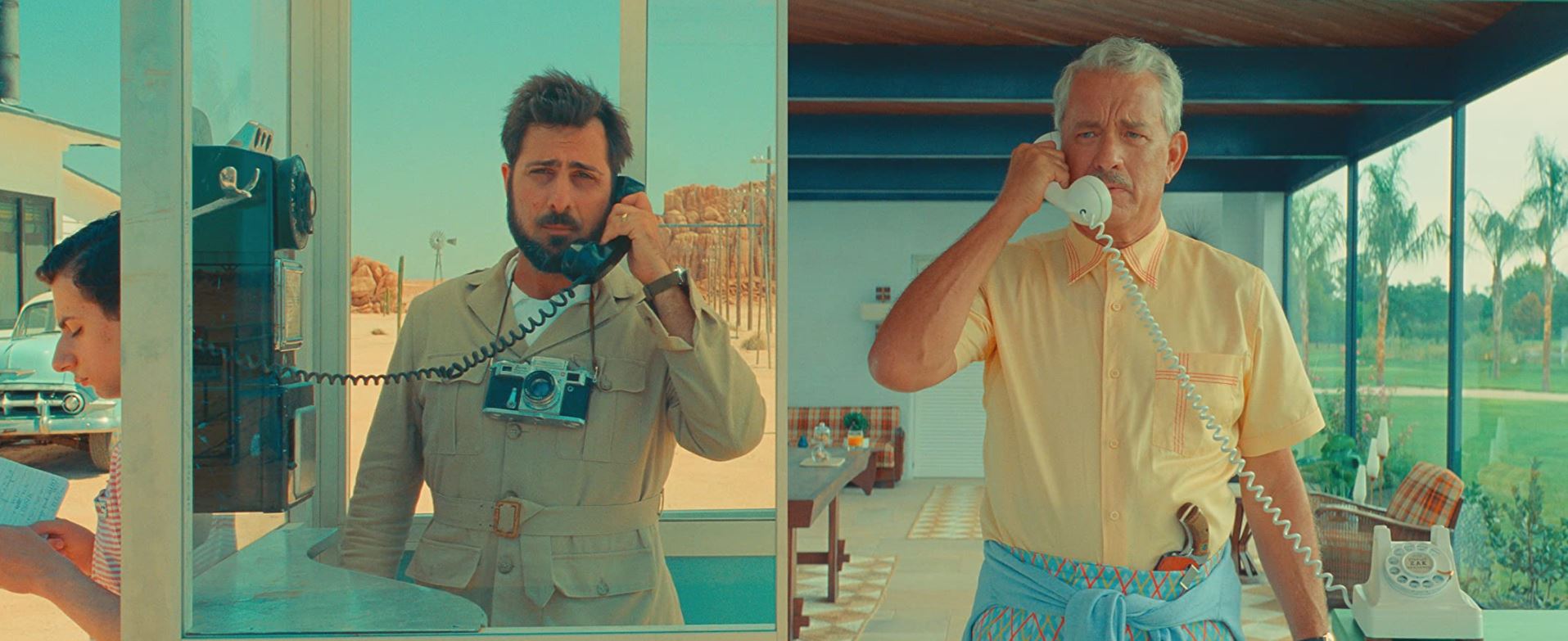Among film buffs, the work of Wes Anderson has gained a mystique all its own. The writer-director has earned a reputation as a modern-day auteur thanks to his distinctive style. His latest movie fits right in. Asteroid City is often funny, pleasing to look at, and full of talented actors, but it is also a more layered experience than you might expect.
After an indie start, Anderson hit the mainstream with 1998’s Rushmore. He developed and refined his trademarks after that with films like The Royal Tenenbaums and The Grand Budapest Hotel. The way his films look is so recognizable, even his two stop-motion animated films stand out as “Wes Anderson films.” Maybe a viewer’s personal taste doesn’t connect with it. But there’s no denying you can tell Anderson’s work when you see it. That consistency is a powerful lure to acting talent as well. He usually features a large cast of characters in his stories and he has no shortage of talent in front of the camera.
Anderson’s hallmarks are all present in Asteroid City, on top of a story that adds heart to the humor. The result is one of his most accessible films, though the sheen of artificiality doesn’t completely gel with the plot.

“You picked the wrong time to get born.”
“Asteroid City” is actually the name of a play. It is the most successful work by a well-respected playwright, taking place in a small American desert town in 1955. Black and white sequences detail the workings behind the scenes of the play, while the sun-drenched color sections dramatize the play itself. It’s all very meta.
In the play, an array of junior stargazers and their parents gather in Asteroid City for a celebration where the young scientists will get awards for their achievements. The town will also commemorate the asteroid that landed there thousands of years before. Jason Schwartzman (a frequent Anderson collaborator) plays the father of one of the genius kids, and Tom Hanks is his father-in-law. Another of the parents is Scarlett Johannson‘s famous actress. (Again, meta.)
There are many other people in the town, too, when the unexpected happens: a spaceship appears and an alien takes the town’s asteroid and leaves. After the town is quarantined for a few days, the alien returns the asteroid and leaves again. Clearly, Anderson’s usual deadpan humor is in full effect. And there are plenty of moments here that are quite funny. However, there is more going on than laughs.

“You can’t wake up if you don’t go to sleep.”
Schwartzman’s character has recently lost his wife and only just now tells his kids about it as the play begins. That’s just one of the details that lends an undercurrent of melancholy to the movie. Unfortunately, Anderson’s signature artificial tone doesn’t always sit comfortably with the heightened plot of the play within the film. There may be a sci-fi element here, but the central theme is really about storytelling.
Interestingly, the presentation of the play’s origins is staged more like a theatrical production. The “play” part has much more of a dynamic camera and expansive locations. Speaking of which, the production design of the town in the play is brilliant. It’s memorable and does a lot with a handful of spaces. I won’t be surprised if it gets an Oscar nomination.
The cast is another area that might get awards attention too. It’s a large ensemble but Schwartzman and Johannson’s interaction stands out. And, delightfully, Tom Hanks adjusts to Anderson’s style like he was born to it.
The laughs and the emotions that do work in Asteroid City are the best parts of the story, while the visuals add a well-coordinated aesthetic layer. It’s a worthwhile addition to Wes Anderson’s body of work.
Asteroid City is now in theaters.

